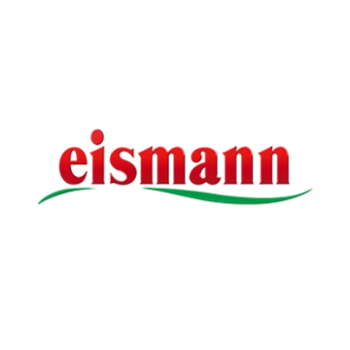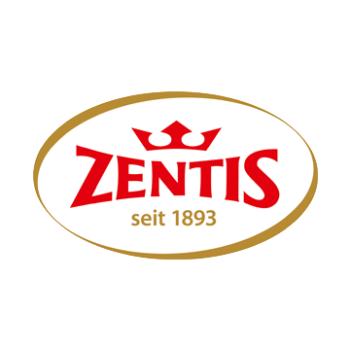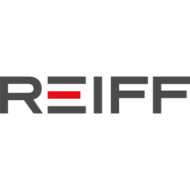Build your digital procurement process with SAP products from d.velop
Using SAP? Then you already have the perfect basis to completely digitalise your Procure-to-Pay process, also sometimes referred to as Procure-to-Pay. But why would you want to go digital?
Procuring materials is complex, comprising five individual steps – from purchase requisition to payment (Procure-to-Pay, or P2P for short). The graphic shows all the different components involved.
Not so complicated, right? Remember that the individual sub-processes include incoming documents such as purchase orders, delivery notes and invoices. These must be processed and approved, all by different employees across different departments.
SAP offers some solutions for a few sub-steps. However, the procurement process is not considered as a whole. Individual workflows are not connected to form an end-to-end process. Switching between digital and analog processes and all the risks that entails is part of the design.
It’s time to invest in an all-encompassing Procure-to-Pay process based on SAP.
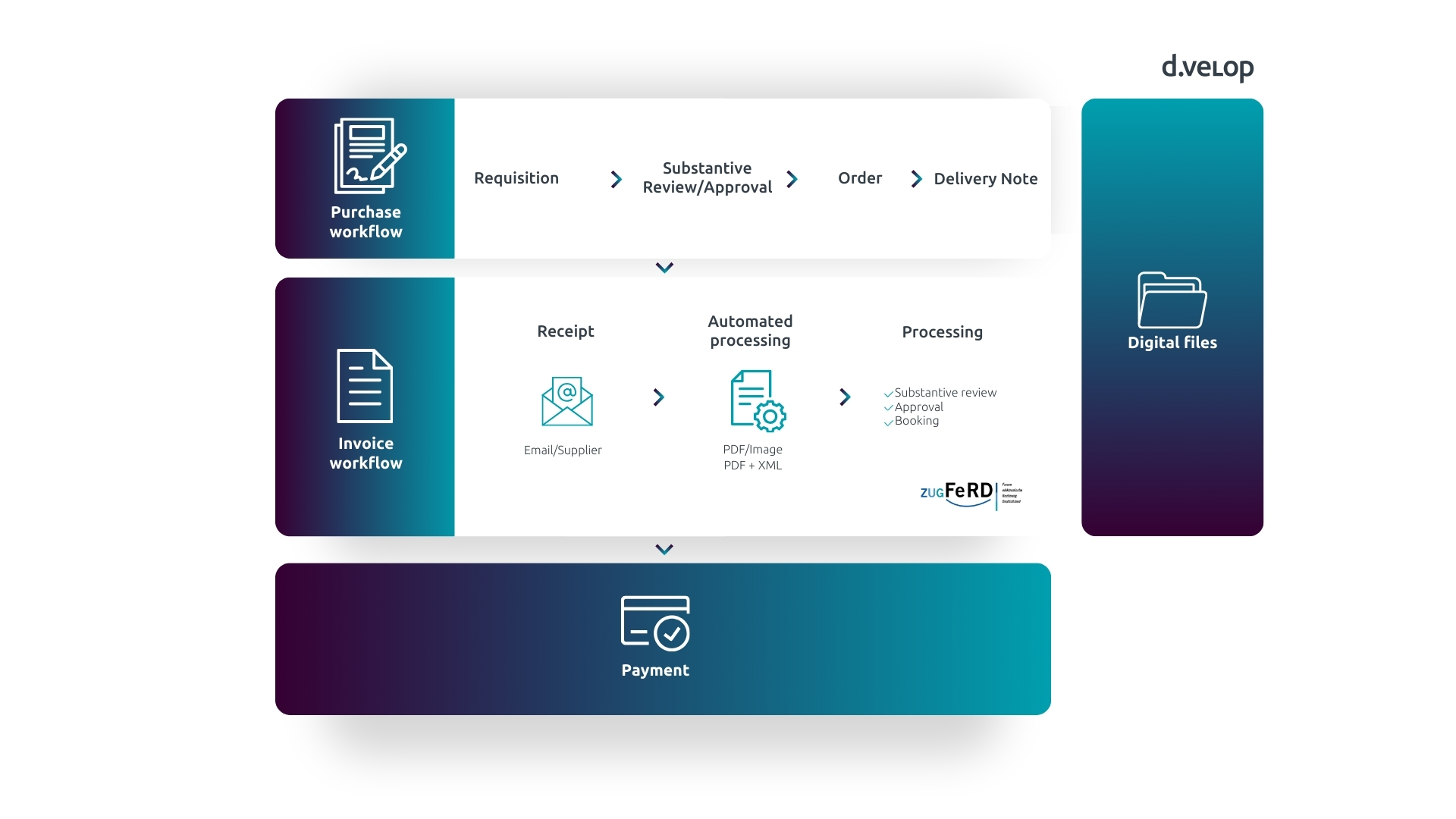
No continuous SAP P2P process in use?
This leads to the following problems in companies:
- 15 % of additional cost on average due to Maverick Buying
- 75 € is the average process cost per purchase order
- 87 % of procurement executives believe that digitisation will improve the purchasing process
Functions of the digital Purchase to Pay process in SAP
The Purchase to Pay process in SAP is fully digitised
The entire procurement process of a company can be digitally represented from the request for needs to payment and booking of the order. The process steps such as Purchase Requisition, Purchase Order, Order Confirmation, Goods Receipt, and Invoice Receipt are natively integrated within your SAP system.
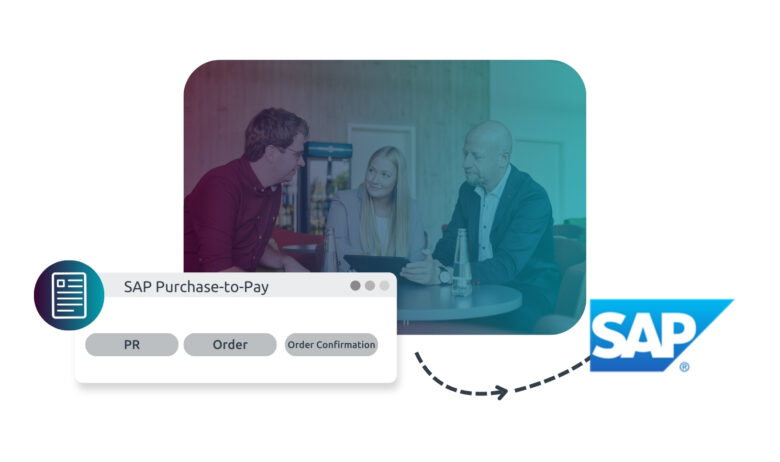
Purchase Requisition: The digital purchase requisition
In the company, the need for goods is coordinated and reported through a Purchase Requisition (PR) via SAP. This is automatically forwarded to the responsible processor to place the order with the right supplier under the negotiated conditions.
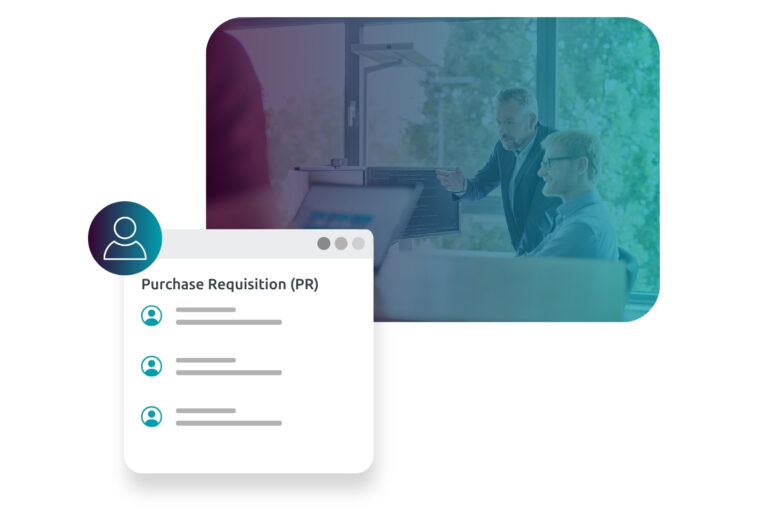
Order & Order Confirmation
After placing an order based on the purchase requisition (PR), the order confirmation and purchase order data are electronically matched to avoid manual verification processes and minimise errors. The workflow-based verification and approval processes can be monitored through an SAP cockpit.
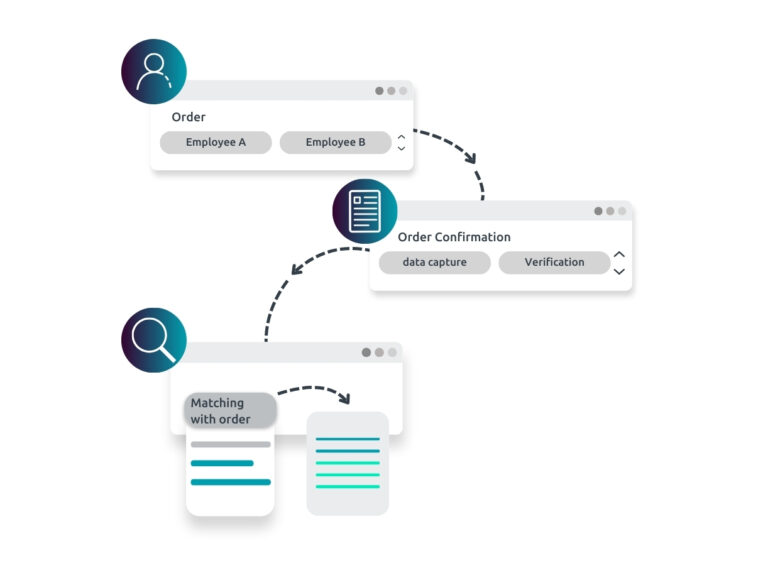

Purchase to Pay White paper
In 4 steps to an automated procurement process
18 pages how to automate your procurement process. From the as-is analysis to the digitisation of the individual sub-processes.
- step: Create purchase requisition & trigger order
- step: Check goods receipt
- step: Check & release invoices
- step: Trigger purchase order & document storage
Get insights into what a digital procurement process looks like and the advantages it offers over a traditional process.
Process the goods receipt digitally
After the arrival of the goods, the delivery note is also electronically captured and compared with the underlying order and order confirmation. There is an immediate overview of goods receipts in SAP, and any deviations and subsequent processes are accelerated.
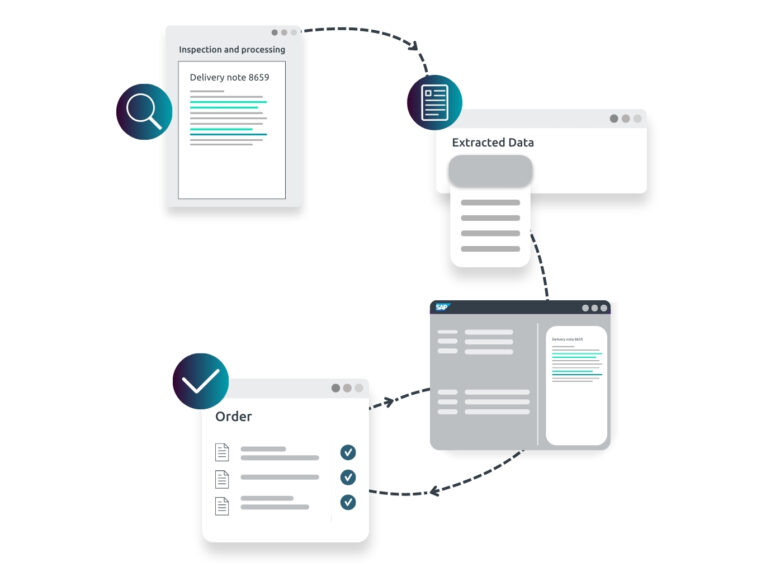
SAP invoice workflow: A seamless process
The SAP invoice workflow concludes the P2P process. Invoices are extracted, classified, and automatically compared with process-relevant documents and SAP master data. They are then assigned to responsible individuals for approval and invoice verification in SAP. Right from the beginning of the entire purchase-to-pay process, process-relevant documents are archived in a legally compliant and GDPR-compliant manner. This allows each individual process to be traced using an SAP document.
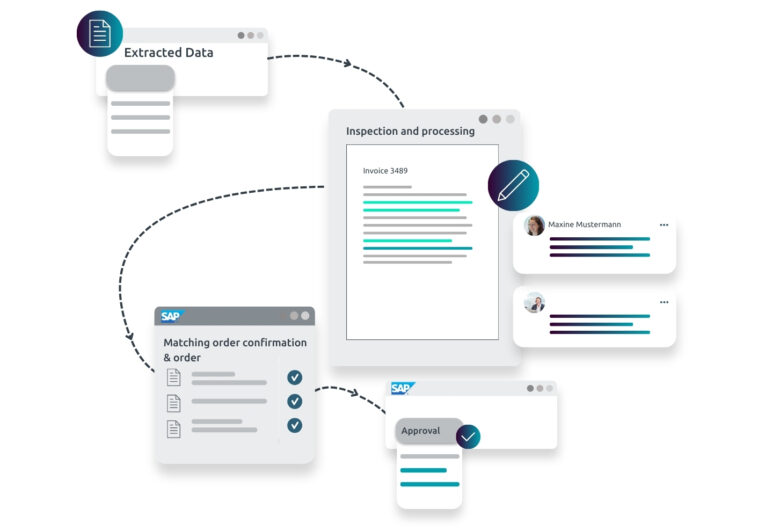
The P2P process is archived in a legally compliant manner.
At the beginning of the entire purchase-to-pay process, the process-relevant documents are archived in a tamper-proof and GDPR-compliant manner. This allows for the traceability of each individual process through an SAP document.
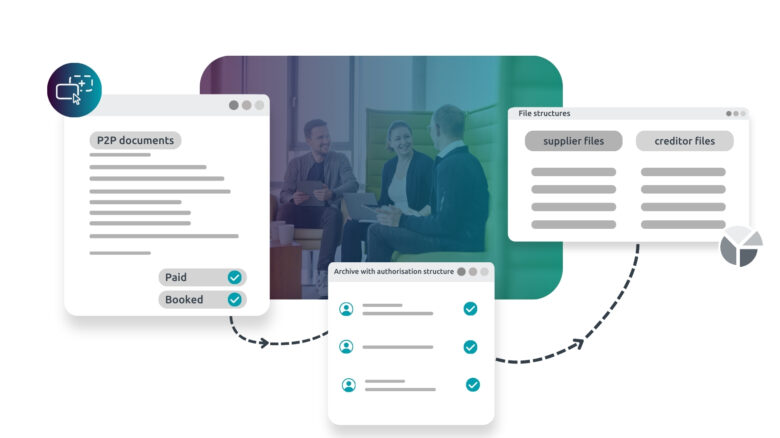
Advantages of a digital Procure to Pay process
- Reduce process costs. Electronic procurement reduces process costs in purchasing by an average of 30% (BME e.V. study).
- Enjoy discounts for early payment and avoid fines for late payment.
- Gain full transparency across all procurement processes in SAP and the DMS. Overview of all orders, invoices, goods, and payments.
- Lower purchase prices. Stopping maverick buying reduces purchase prices by an average of 7% (according to a study by the Association for Supply Chain Management, Procurement and Logistics).
- High level of process automation. Direct pre-entry in the SAP system eliminates the need for manual data transfer.
- No wasted time. Authorised parties and deputies are clearly defined to avoid deadlocks.
- Audit-compliant archiving. All important information such as purchase requisitions, approvals, and purchase orders are automatically archived in accordance with legal requirements.
- Free up capacity. Reducing time spent on manual tasks frees capacity for more important things.
Read more about the procure to pay process in SAP in the d.velop blog
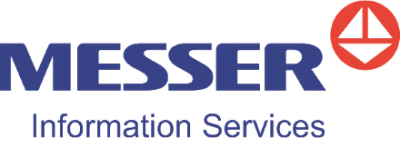
Our internal processes were rigid and flawed. d.velop helped us define our Procure-to-Pay processes more clearly and dramatically improve our processing time.
Bernd Raabe
Messer Information Services GmbH
SAP competence by d.velop
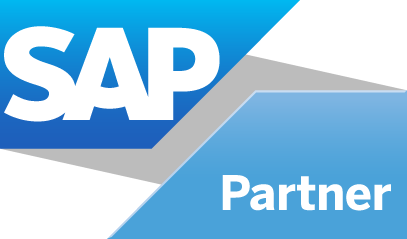
Are you looking for a team of experts who’ve been working in the SAP ERP environment for years? Then you’ve come to the right place. SAP is a fixture in d.velop’s own strategy. The company also has its own SAP center.
- d.velop is a long-time certified SAP partner
- More than 700 customers use d.velop products in the SAP environment
- Our SAP customers include:
Westfleisch SCE mbH, Weber GmbH & Co. KG, Eismann Tiefkühl Heimservice GmbH - Dedicated SAP centre with experienced SAP advisors and SAP developers
Frequently asked questions and answers about procurement processes in SAP
Purchase to Pay (P2P) stands for the process from procurement to payment of an invoice within an organisation. The focus of this process is the transaction of data between the sub-steps. Specifically, it involves the handling of supplier orders and the processing of incoming order confirmations, delivery bills and invoices.
The purchase to pay process in SAP covers all steps from ordering goods and services to payment to the supplier. This also includes the creation of purchasing documents, the release of purchase orders, the recording of deliveries and invoices, the checking of invoices for accuracy and payment to the supplier.
Order to Cash (O2C) stands for the process from the incoming customer inquiry to the receipt of payment within an organization. The order-to-cash process handles the entire revenue generation with the customer. Specifically, it involves the handling of incoming customer orders and their processing within SAP.
The Classifier is a platform that is fully integrated into SAP and captures and enriches transaction-related data fully automatically for further document-specific processing. The Classifier includes a workflow module that can be specifically configured for the process-controlled further processing of data depending on the document type and company code. The platform offers solution modules for credit-side purchase-to-pay, debit-side order-to-cash and travel expense processes. Developed in its own namespace, individual modules or entire process chains are imported into your SAP system as a transport and adapted to your company-specific requirements via customising.
Software Demo
Experience the digital P2P process in SAP live.
Would you like to experience our SAP solutions live?
Simply fill out the form and request a software demo.


